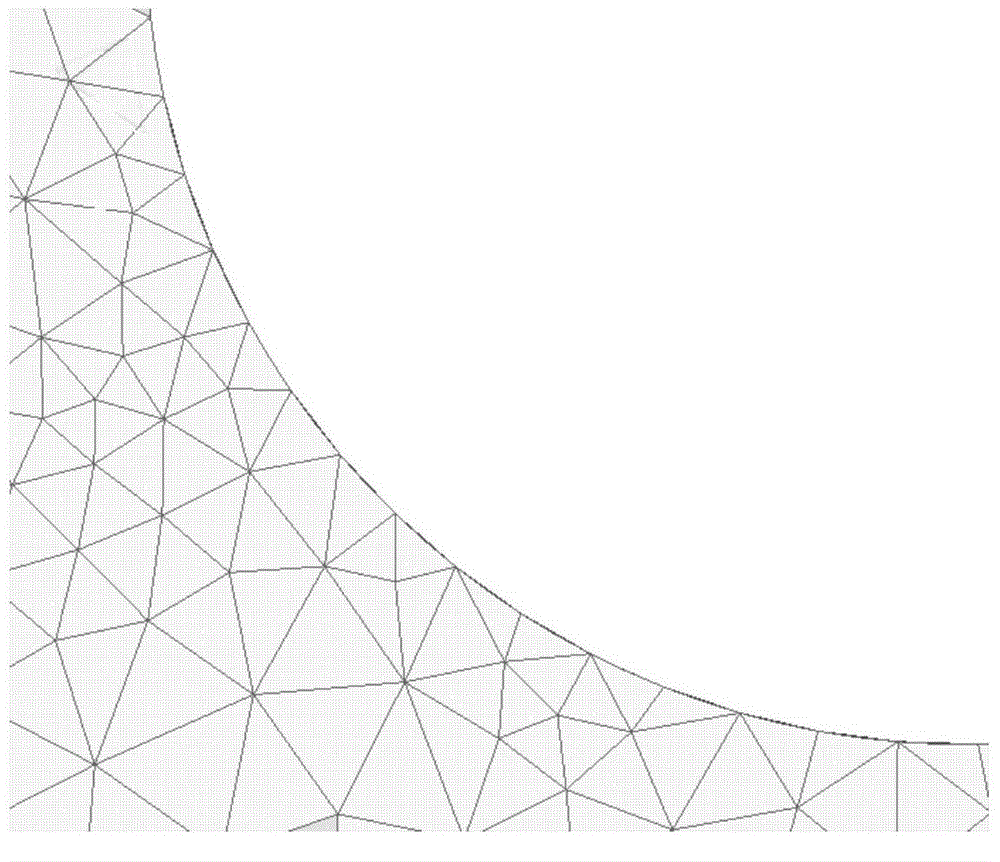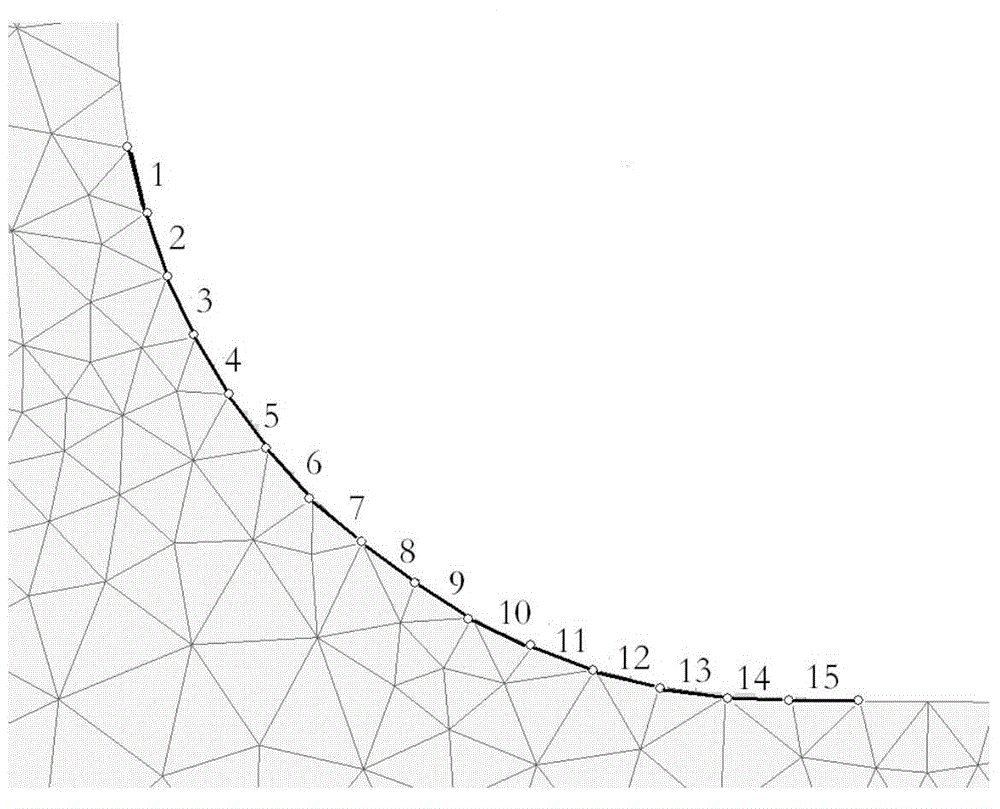Method for obtaining theoretical strain in strength finite element analysis
A theoretical strain and finite element technology, applied in special data processing applications, electrical digital data processing, instruments, etc., to achieve the effects of simplified acquisition steps, simple and clear principles, and easy operation
- Summary
- Abstract
- Description
- Claims
- Application Information
AI Technical Summary
Problems solved by technology
Method used
Image
Examples
Embodiment Construction
[0013] The present invention will be further described in detail below in conjunction with the drawings, please refer to Figure 1 to Figure 2 .
[0014] Such as figure 1 Shown is the partial mesh diagram of the finite element model of the test piece;
[0015] Such as figure 2 As shown, in the finite element model of the test piece, an additional rod element is established according to a given arbitrary position and direction, numbered from 1 to 15;
[0016] A method for obtaining theoretical strain in strength finite element analysis, including the following steps:
[0017] Step 1: According to the finite element principle and the principle of strain sensor measurement, an additional rod element is established in the finite element model of the test piece according to the given arbitrary position and direction;
[0018] Step 2: Define the stiffness characteristics of the rod element to be infinitely small relative to the local stiffness characteristics of the structure;
[0019] Step ...
PUM
 Login to View More
Login to View More Abstract
Description
Claims
Application Information
 Login to View More
Login to View More - R&D
- Intellectual Property
- Life Sciences
- Materials
- Tech Scout
- Unparalleled Data Quality
- Higher Quality Content
- 60% Fewer Hallucinations
Browse by: Latest US Patents, China's latest patents, Technical Efficacy Thesaurus, Application Domain, Technology Topic, Popular Technical Reports.
© 2025 PatSnap. All rights reserved.Legal|Privacy policy|Modern Slavery Act Transparency Statement|Sitemap|About US| Contact US: help@patsnap.com


